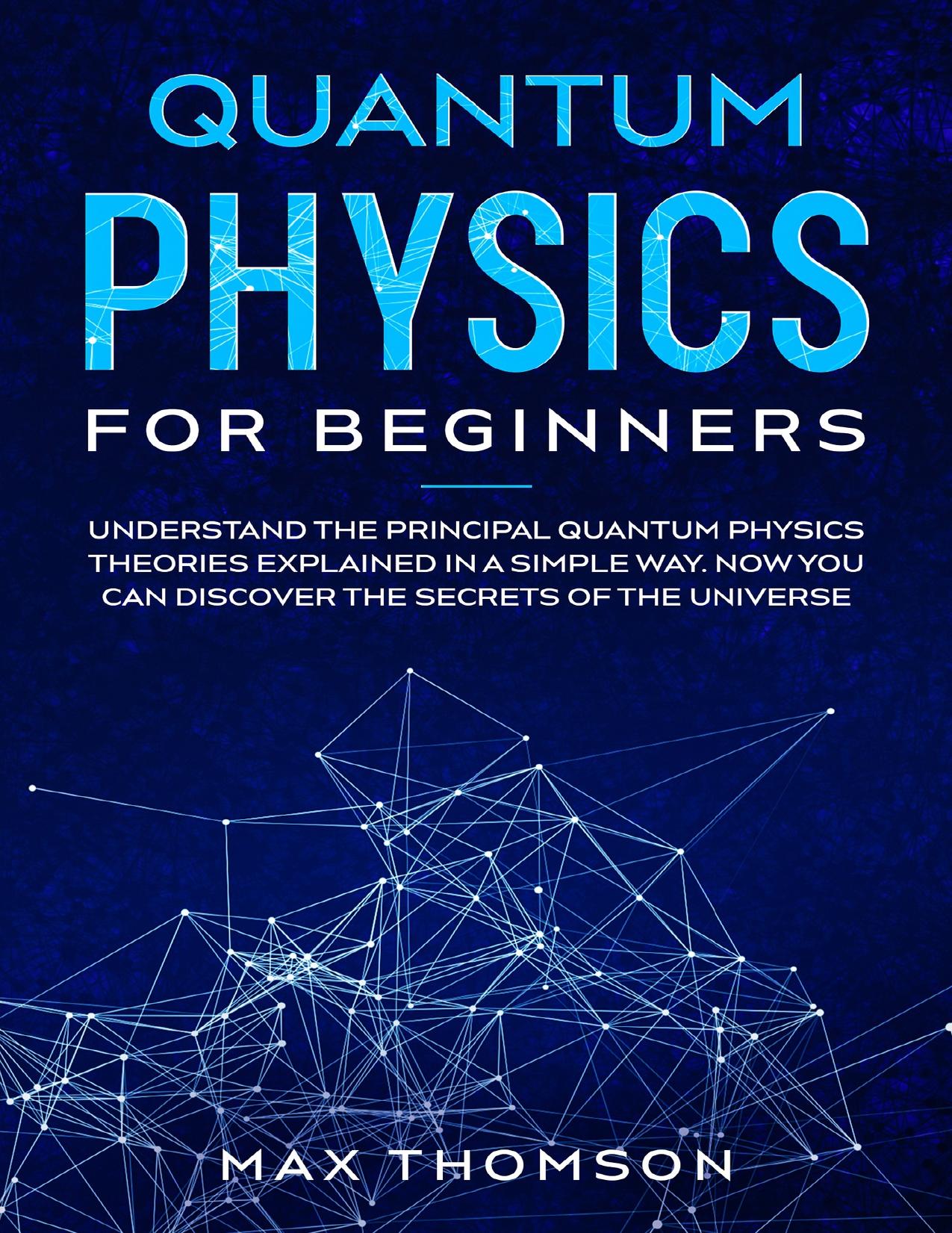Quantum Physics for Beginners: Understand the Principal Quantum Physics Theories Explained in a Simple Way. Now you Can Discover the Secrets of the Universe. by Thomson Max

Author:Thomson, Max [Thomson, Max]
Language: eng
Format: epub, pdf
Published: 2020-08-17T00:00:00+00:00
10.1 The Stern-Gerlach experiment
The electron model in orbit around Bohr's atoms had already enunciated the idea of angular momentum within the atom.
→ Angular momentum is the measure of a body's tendency to stay in orbit.
In Bohr's model, the angular momentum of an electron is determined by its mass, angular velocity and distance from the nucleus.
The concept of angular momentum persists in quantum wave mechanics and the previous axiom that quantized energy comes from the mathematics of the Schroedinger equation in three dimensions.
With wave mechanics, electrons no longer move in circular orbits. Valid solutions are stationary waves around the nucleus.
→ Even experienced quantum physicists find it difficult to visualize the angular momentum of an electronic orbital, in which the particle does not follow any path in space, so do not worry if it is not entirely clear to you.
In any three-dimensional system, the angular momentum is real and must be quantized. Furthermore, the angular momentum is a vector, which has both a magnitude and a direction.
According to Schroedinger's equation, both the total amount of angular momentum and its direction is quantized.
The quantization of the quantity of the angular momentum has already been defined by the quantum number "l ".
For the quantization of the direction, we used the letter m , which identified the possible values for the projection of the angular momentum vector on any fixed axis.
Scientists were keen to discover direct experimental evidence of the quantization of angular momentum.
Otto Stern, one of Max Born's assistants, proposed a way to do it in 1921, together with the help of Walter Gerlach.
We affirm that the quantum number l represents the orbital angular momentum of an electron.
Since the electron has an electric charge, an electron in orbit should feel a force every time the atom moves in an uneven magnetic field.
If the direction of the field points upwards, that force will be up or down depending on the direction of the electron's orbital angular momentum. Stern and Gerlach, therefore, decided to fire a beam of neutral atoms through a strong non-uniform magnetic field and examine the deflection of that beam.
For atoms with zero angular momentum, Stern and Gerlach did not expect any deflection.
For a non-zero angular momentum, there was a series of deflections if the vector was randomly oriented in any direction.
However, if the direction were quantized, only a few deflections would occur, and different points or bands would be noticed when measuring the position of the beam after it has passed into the magnetic field.
As already seen, we can take any integer from zero upwards (limited only by n ).
The possible values for "m " were positive or negative integers, between -l and + l. Therefore, there is only one possible projection for l = 0 , three for l = 1 , five for l = 2 ...
The number of projections is always odd, regardless of the quantum state in which the electrons are located.
This is the reason why Stern and Gerlach were so confused by what they noticed when they experimented.
Download
Quantum Physics for Beginners: Understand the Principal Quantum Physics Theories Explained in a Simple Way. Now you Can Discover the Secrets of the Universe. by Thomson Max.pdf
This site does not store any files on its server. We only index and link to content provided by other sites. Please contact the content providers to delete copyright contents if any and email us, we'll remove relevant links or contents immediately.
The Complete Stick Figure Physics Tutorials by Allen Sarah(7253)
Secrets of Antigravity Propulsion: Tesla, UFOs, and Classified Aerospace Technology by Ph.D. Paul A. Laviolette(5229)
Thing Explainer by Randall Munroe(3838)
The River of Consciousness by Oliver Sacks(3488)
The Order of Time by Carlo Rovelli(3088)
How To by Randall Munroe(2956)
A Brief History of Time by Stephen Hawking(2902)
I Live in the Future & Here's How It Works by Nick Bilton(2892)
The Great Unknown by Marcus du Sautoy(2605)
What If?: Serious Scientific Answers to Absurd Hypothetical Questions by Randall Munroe(2576)
Midnight in Chernobyl by Adam Higginbotham(2424)
Blockchain: Ultimate Step By Step Guide To Understanding Blockchain Technology, Bitcoin Creation, and the future of Money (Novice to Expert) by Keizer Söze(2402)
Networks: An Introduction by Newman Mark(2292)
The Meaning of it All by Richard Feynman(2258)
Easy Electronics by Charles Platt(2242)
The Tao of Physics by Fritjof Capra(2195)
Midnight in Chernobyl: The Untold Story of the World's Greatest Nuclear Disaster by Adam Higginbotham(2119)
When by Daniel H Pink(2050)
Introducing Relativity by Bruce Bassett(2040)
